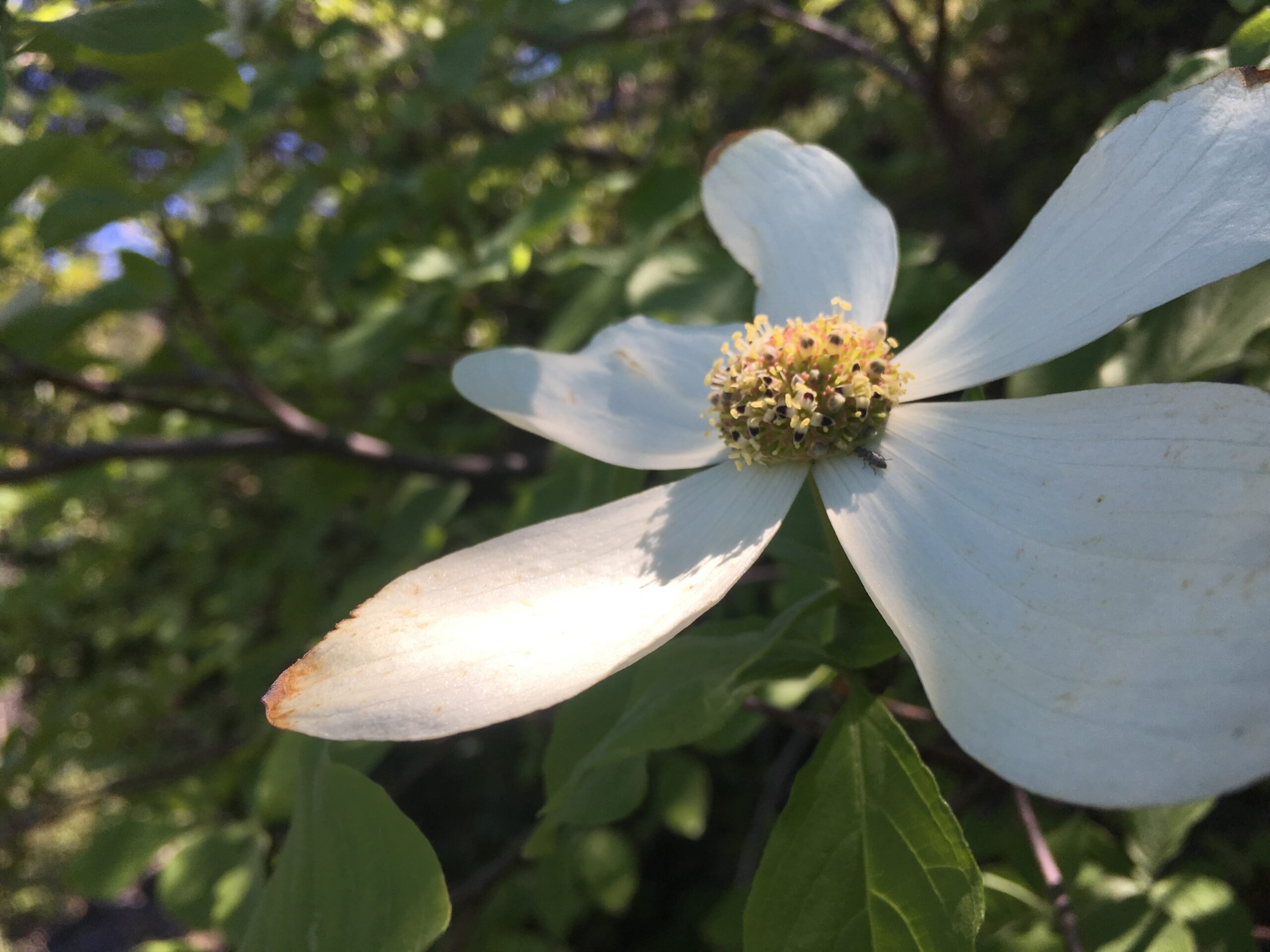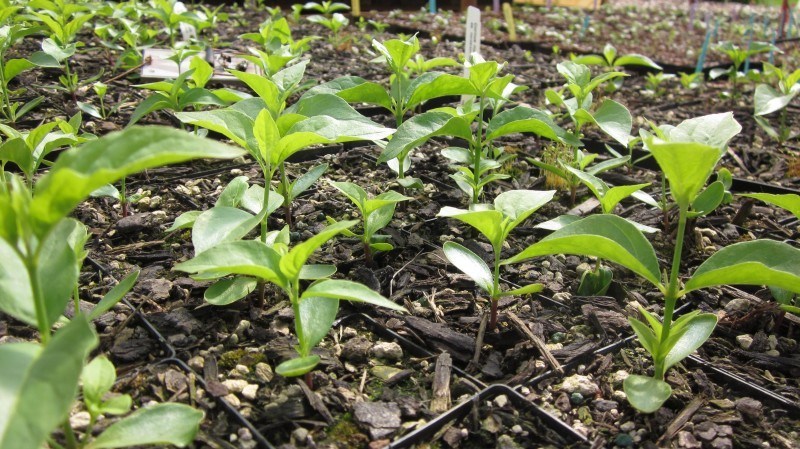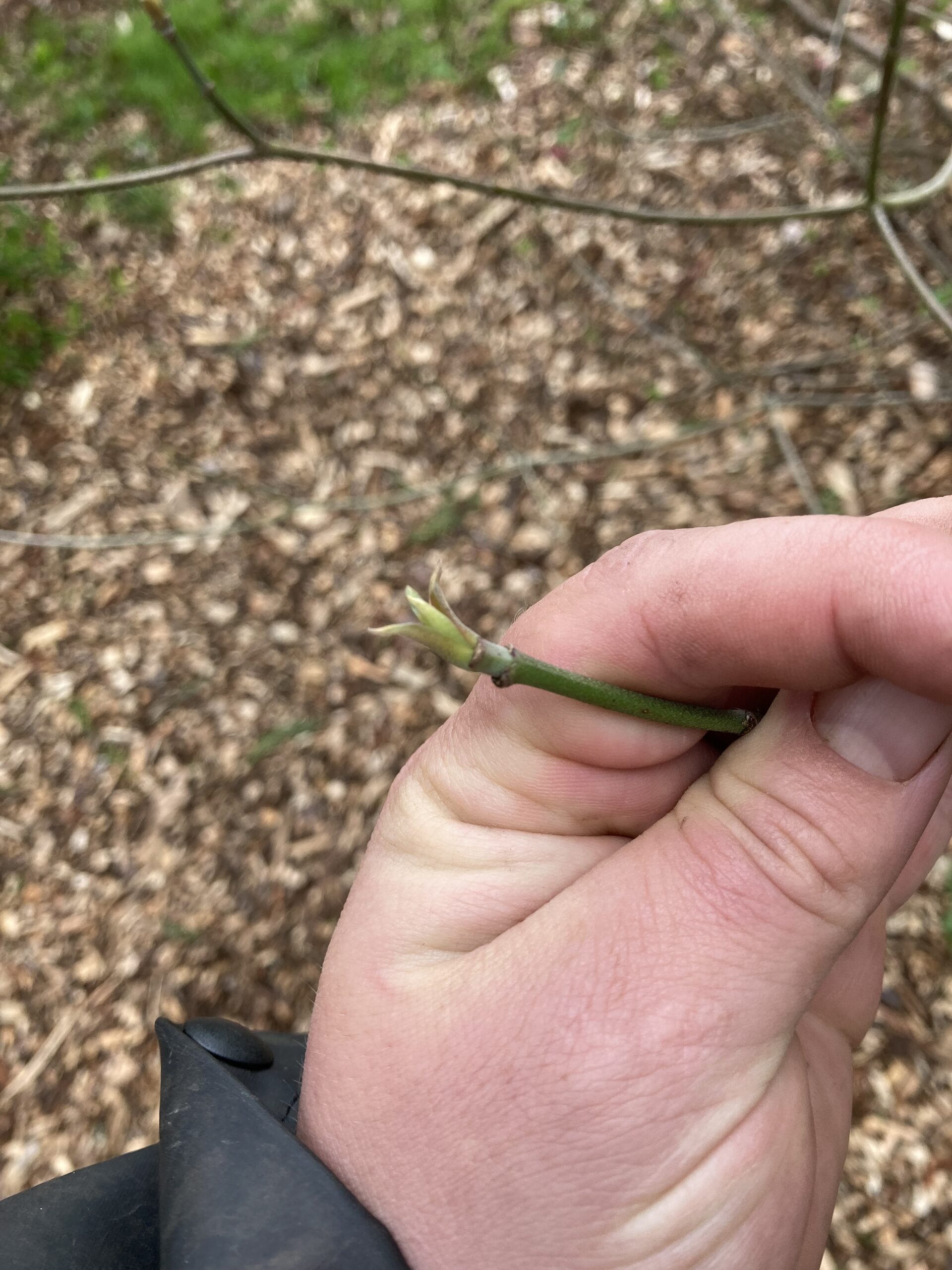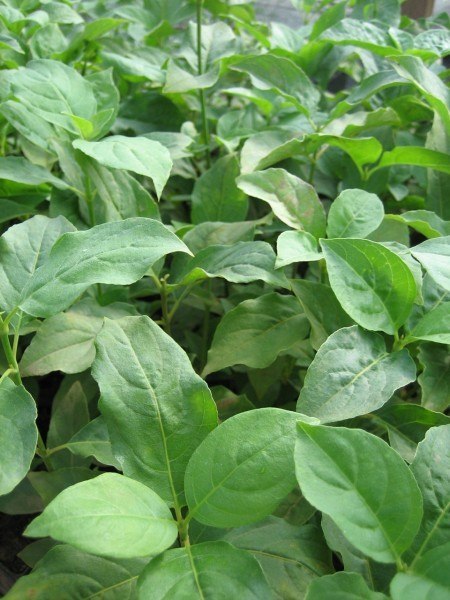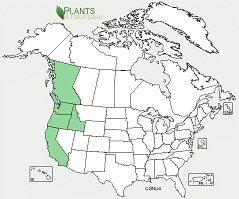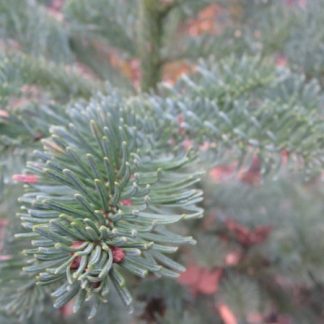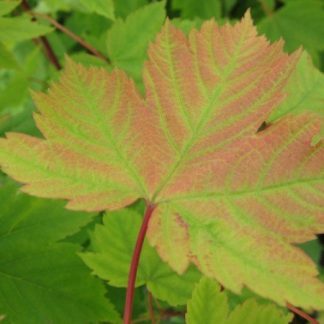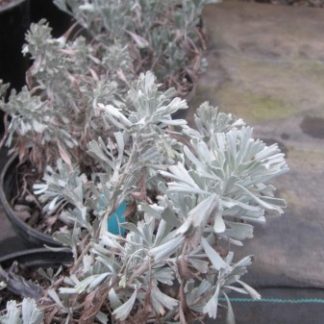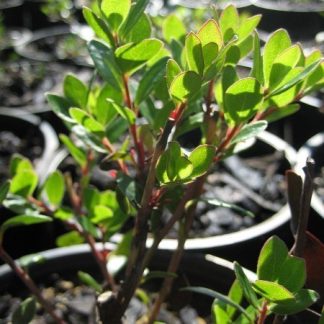Cornus nuttallii
Pacific dogwood
Habit: a deciduous, multi-branched tree with a rounded crown sometimes as wide as it is tall. The reddish-brown to black bark is smooth becoming scale-like with age. The dark green, oval leaves are tapered at the base, sharp pointed with prominent veins and slightly wavy margins. Inflorescence is a small, spherical, dense cluster of 30-40 greenish white flowers, subtended by 4-6 white petal-like bracts, appearing to be one large showy flower. Flowers ripen into a tight ball of bright red fruit. Blossoming occurs between April and July, occasionally flowering again in early fall due to late summer water stress. Leaves turn pinkish-red in autumn.
Ecology: Pacific dogwood is more common in riparian zones below elevations of 5000 ft (1524 m) from Southern British Columbia south through the west side of the Cascades into Southern California.
Growing Conditions: full sun to full shade in humus rich, moist to wet well-drained soil. Pacific dogwood has a low frost tolerance, high flood tolerance, and moderate shade tolerance and is quite drought tolerant.
Because of its graceful nature Cornus nuttallii makes a beautiful ornamental plant. Its ability to stabilize soil, and tolerate wet conditions makes it an ideal candidate for streambanks. The Idaho population is considered threatened.
Specs
Deciduous Tree/Shrub
30-50 ft (9-15 m)
10-30 ft (3-9)
7-9

